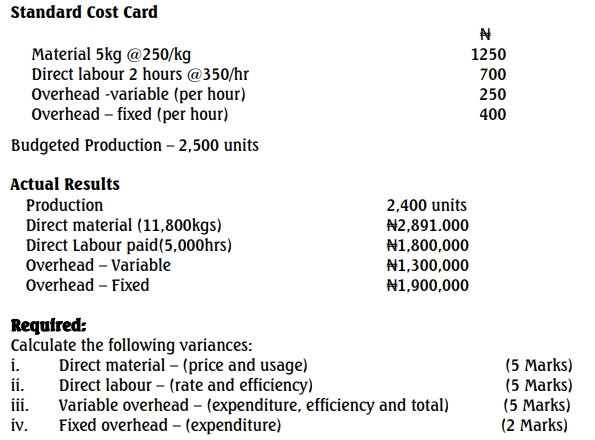- 12 Marks
MI – Nov 2020 – L1 – SB – Q4b – Basic Variance Analysis
Calculate material and labour variances for product AB, and list possible causes of each variance.
Question
b. ABC maintains the following standard cost card for product AB:
| Item | Standard Quantity | Standard Price | Total Cost (N) |
|---|---|---|---|
| Direct Material A | 3kg @ N8 per kg | N24 | |
| Direct Material B | 5kg @ N6 per kg | N30 | |
| Direct Labour | 2hrs @ N24 per hr | N48 | |
| Variable Overhead | 2hrs @ N9 per hr | N18 | |
| Total Standard Cost | N120 |
Actual Results for the Period:
- Actual production: 11,800 units
- Direct material A: 35,800kg @ N7.5 per kg = N268,500
- Direct material B: 62,000kg @ N7 per kg = N434,000
- Direct labour: 24,500 hours @ N25 per hour = N612,500
- Variable overhead: 24,500 hours @ N9 per hour = N220,500
Required:
i. Calculate the following variances:
- Material price
- Material usage
- Total material
- Labour rate
(9 Marks)
ii. List TWO possible causes of each of the variances in (i) above. (3 Marks)
Find Related Questions by Tags, levels, etc.
- Tags: Labour Variance, Material Variance, Standard Costing, Variance Analysis
- Level: Level 1
- Topic: Basic Variance Analysis
- Series: NOV 2020
Report an error

